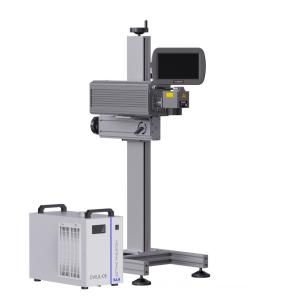Top 5 Considerations for Choosing a Bag Packaging Machine
1. Understand Your Product and Bag Type
This is the foundational step. The characteristics of your product and the desired bag style dictate the type of machine you need.
-
Product Characteristics:
-
Physical State: Is it a powder, granule, liquid, paste, or solid piece? This determines the filling system (e.g., auger for powders, volumetric cup for granules, pump for liquids).
-
Flowability: Does it flow easily like rice, or is it compact and sticky like damp sand? This affects hopper design and vibration systems.
-
Abrasiveness & Corrosiveness: Highly abrasive products require hardened steel components to resist wear.
-
Hygiene Requirements: Products for food or pharmaceuticals need machines with easy-clean designs, often with stainless-steel contact parts and minimal crevices.
-
-
Bag Style:
-
Pre-made Bags: Supplied as finished, flat bags. The machine opens, fills, and seals them. Ideal for high-quality retail bags with complex graphics.
-
Form-Fill-Seal (FFS): The machine forms bags from a roll of film, fills them, and seals them in a continuous operation. This is highly efficient and cost-effective for a wide range of applications.
-
The Question to Ask: "Can this machine reliably handle my specific product and create the exact bag style my market requires?"
2. Define Your Required Speed and Output
Your production targets are non-negotiable. The machine's speed must align with your business goals.
-
Calculate Your Needs: Determine your required output in bags per minute (BPM). Consider both your current volumes and future growth projections.
-
Match the Technology:
-
Low to Medium Speed (e.g., 20-60 BPM): Often vertical form-fill-seal (VFFS) machines or simple pre-made bag machines are sufficient.
-
High Speed (e.g., 60-200+ BPM): Requires robust, high-performance VFFS machines with advanced servo drives, or even horizontal pouch machines for specific applications.
-
-
Don't Over-engineer: Buying a ultra-high-speed machine for a low-volume operation is an unnecessary capital expenditure. Choose a machine that matches your realistic output.
The Question to Ask: "What are my peak production requirements, and does this machine's proven speed consistently meet them?"
3. Evaluate the Level of Automation
Automation directly affects your labor costs, consistency, and operational complexity.
-
Manual/Semi-Automatic: An operator places the bag on the nozzle. Suitable for low-volume, large, or high-value products.
-
Fully Automatic: The machine handles the entire process from bag feeding to final discharge. This is the standard for medium to high-volume production.
-
Integrated Systems: The machine can be integrated with upstream equipment (like weigh scales or product conveyors) and downstream systems (like case packers and palletizers). Consider Future-Proofing – will you need these integrations later?
The Question to Ask: "How much manual intervention am I willing to accept, and what is my total cost of ownership when factoring in labor?"
4. Prioritize Total Cost of Ownership (TCO), Not Just Price
The initial purchase price is only part of the story. A cheaper machine can become far more expensive in the long run.
-
Initial Purchase Price: The upfront cost of the machine.
-
Operational Costs:
-
Changeover Time: How quickly can you switch between different products or bag sizes? Machines with servo drives and recipe storage save valuable production time.
-
Film Waste: Efficient machines minimize film trim and sealing errors, reducing material cost.
-
Energy Consumption: Modern servo-driven systems are often more energy-efficient than older mechanical systems.
-
-
Maintenance & Support:
-
Ease of Maintenance: Are components easily accessible?
-
Spare Parts Availability & Cost: How quickly and affordably can you get critical spare parts?
-
Technical Support: Does the supplier offer reliable, responsive local service and training?
-
The Question to Ask: "Over the next 5 years, what will this machine truly cost me in terms of purchase, operation, and maintenance?"
5. Assess the Supplier's Expertise and Support
You're not just buying a machine; you're entering a partnership. The supplier's reliability is as important as the machine's.
-
Industry Experience: Do they have a proven track record in your specific industry (e.g., food, chemicals, pharmaceuticals)?
-
After-Sales Service: What is their response time for technical issues? Do they offer comprehensive training for your operators?
-
Crucial for International Buyers: If you are sourcing from abroad, confirm the supplier's ability to provide remote support, detailed documentation (manuals, videos), and a robust network for spare parts logistics.
-
-
References and Case Studies: A reputable supplier will be happy to provide examples of successful installations similar to yours.
The Question to Ask: "If this machine goes down, how quickly and effectively will this supplier help me get back up and running?"
Conclusion: A Strategic Investment
Choosing a bag packaging machine is a strategic decision. By moving beyond the initial price tag and thoroughly evaluating these five areas—Product & Bag, Speed, Automation, TCO, and Supplier Support—you can invest with confidence.
A well-chosen machine will become a reliable, profit-driving asset on your production line for years to come.
Ready to find the perfect bagging solution for your needs? [Contact our experts today] for a personalized consultation and see our machines in action.

